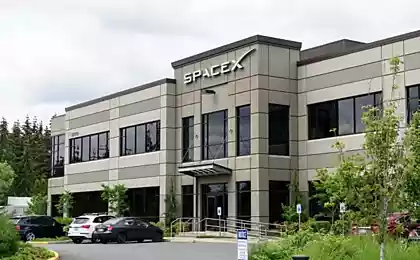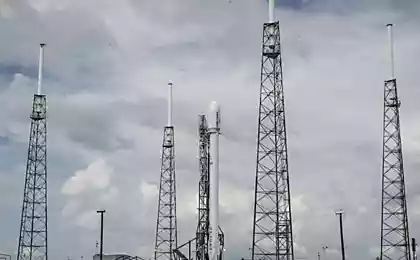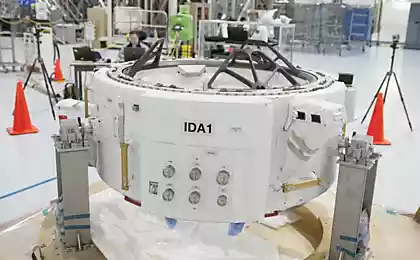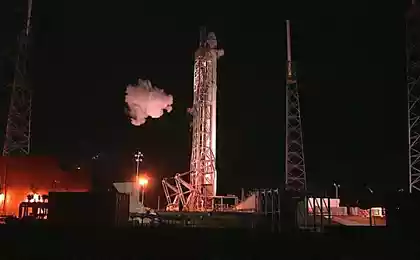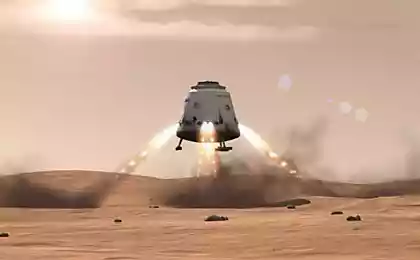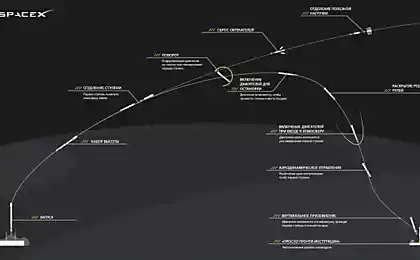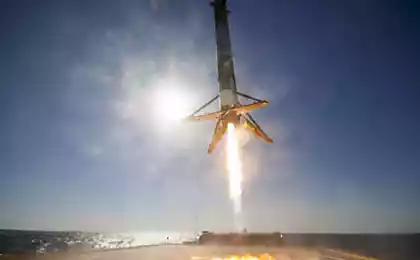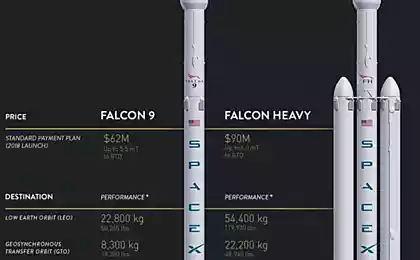546
The Story Of SpaceX
Have you ever thought about space? On flights into earth orbit or even to Mars? I think for once in your life anyone ask these questions in my head. Here as well back in 2001 I thought of that Elon Musk and the future completely from scratch has created an entire industry of “Private commercial spaceflight”.
We all know that brave ideas guy, and he seems to have taken over the space thoroughly, that, in fact, the proof of SpaceX. Today we will try to understand the history of this company and tell you what was Elon Musk and the SpaceX company to make a commercial private space flight a reality.
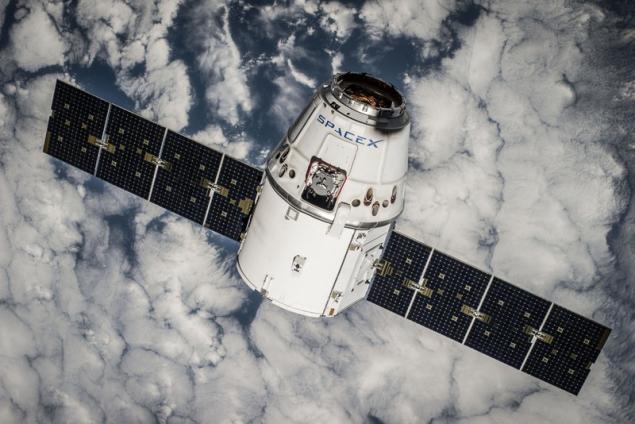
Elon was captured on a simple idea: to create a commercial airline for space. This idea meant that the missiles should be like planes, reusable, publicly available and easy to handle. It was the plans for our planet, Elon went on, the plans he was also on the exploration of Mars is to create on Mars live a city. The idea is certainly ambitious, and if we talk about Mars, probably, it is a plan not for the next 10 years, although Elon says the opposite, but the fact that Musk already shows and proves to us today — the realization of his first idea called SpaceX.
In 2001, Elon Musk began his journey with the search for a suitable booster. The choice fell on “Dnepr-1”, but the Mask is not satisfied with the price. Considering that the materials to build the missiles are only 3% of the final cost of the rocket, already thinking about their future space company, he came to the conclusion that his company could reduce the cost of launching missiles 10 times with 70% profit. Another argument in favor of creating their company was developing its own components and technologies for their own private rockets, which until the emergence of SpaceX simply didn't exist in nature.
And in early 2002 Musk launched the search for people for his space company, which soon received the name of SpaceX. Elon took the team Tom Mueller, and when he accepted his offer, Elon formalized company. The company rented a hangar with an area of about 7,000 square feet in El Segundo, California. Musk decided to call their first rocket, Falcon 1 in honor of the Millennium Falcon spaceship from "Star Wars". Also Musk has planned the date of the first launch of the Falcon 1, exactly 15 months, the company that is, by November 2003. But, alas, Musk underestimated the time for development from scratch of the launch vehicle and three engine families: Merlin, Kestrel, and Draco.

The first launch of Falcon 1 took place on 24 March 2006. Failed at the stage of the first stage engine. Immediately after the launch was followed by a fire, and the missile fell into the water. As Musk said in an interview, he was hoping for a good run, and the result was, in principle, predictable. With this run and began a black stripe SpaceX for longer than 2 years.
The second Falcon 1 launch also ended in failure: from off-design conditions when dividing the stages, the fuel stopped flowing to the engine, the rocket had not reached orbit and burned up in the atmosphere. The third time also did not succeed, the first step after the split "catch up" the second and struck it. The blow fell at the moment of start of the engine of the second stage, whereby the second stage is out of order. On this launch the company is strongly hoped and even made a payload rocket carrying one military American satellite, two Malaysian microsatellite and the cargo of ashes for burial in space.
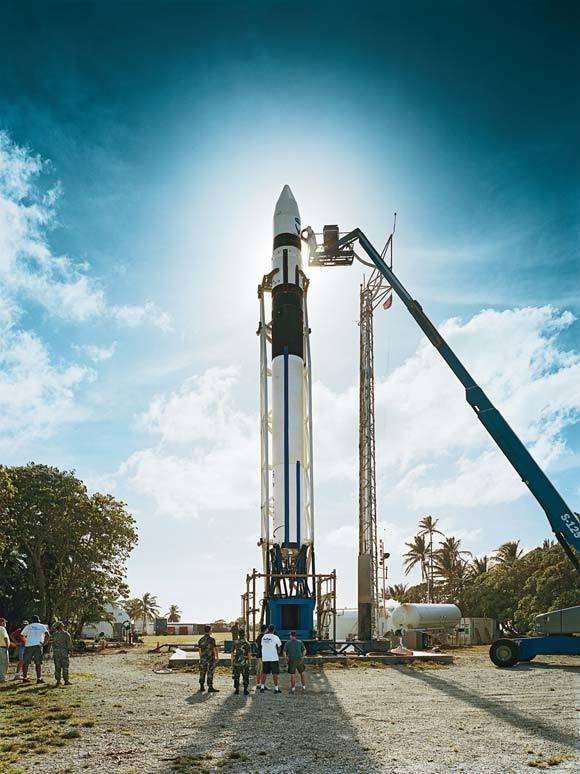
The failure of the fourth launch would mean the collapse of the company, Musk himself said in an interview that on the fourth launch, the company had no margin for error. The launch took place on September 28, 2008, the rocket was just a mock-up of the cargo 150 kg. the Launch was successful, and the cargo was delivered into a geosynchronous transfer orbit. Elon has proved that his company is not hopeless and has a right to exist.
13 July 2009, Falcon 1 successfully launched into space Malaysian satellite RazakSAT aboard. This was the last scheduled flight of the Falcon 1 family, and the company closed the project and started work on a new family of rockets called Falcon 9.
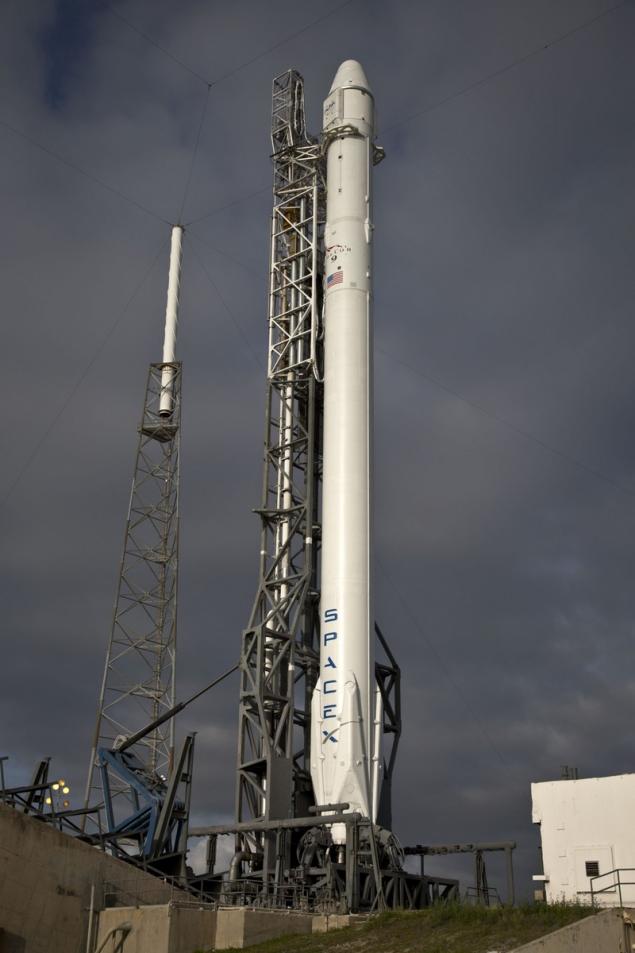
SpaceX formally announced the Falcon 9 on 8 September 2005, a year before the first launch of the first family of carrier rockets. In 2008, the company tested all components of the rocket, and on 4 June 2010, the rocket was standing vertically on the launch pad at Cape Canaveral, and was ready to run. The first launch was canceled a few seconds before the start due to technical problems, the second time the rocket has successfully said goodbye to the Land and delivered its cargo into orbit.
The second missile launch was marked by the first private return cargo vehicle, called Dragon, which SpaceX has developed. Dragon was created for a project Commercial orbital transportation services from NASA. Dragon had the intention to deliver to the ISS food and equipment to maintain the operation of the station. After 7 months after the first launch of the Falcon 9 rocket and a new ready to use spacecraft Dragon made a demonstration flight in which Dragon successfully orbited the Earth twice and splashed down in the Pacific ocean.

SpaceX has won a contract from NASA, and since then, Dragon has become a regular guest on the ISS. In 2014, Elon Musk has unveiled the Dragon V2 passenger spacecraft on the basis of the original cargo Dragon. V2 can accommodate 7 astronauts. In tandem with the launch vehicle Falcon 9, SpaceX received a contact from NASA in the amount of 2.6 billion USD for the completion of the ship and its certification for flights to the ISS. Already in 2017, the Dragon V2 c 4 astronauts will fly to the ISS, up to this point, of course, the company will make test flights without passengers. July 14, 2014 has been a successful launch of a new version of the launch vehicle, the Falcon 9 V1. 1 R with Dragon on Board.
Modification of R implies]. Reusable — reusable. The idea was that during undocking missiles top with Dragon goes to the ISS, and the lower part falls back to Earth and lands on a special landing pad, after which it served, and it will be ready for re-launch. But since the idea's inception to its successful implementation in the space sector takes a long time and a great many mock tests.
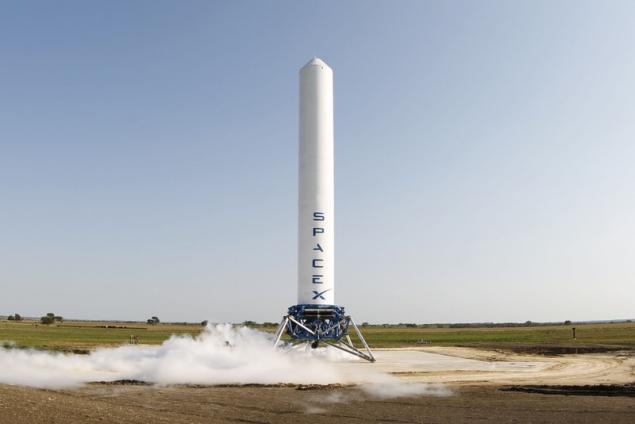
5 attempts to Elon and his team taught their rocket successfully make the descent from a great height to reach the landing pad. At the moment the missile has a problem with a smooth final landing, but Elon said that SpaceX is enough for 2 attempts, and the rocket will learn how to successfully land on the platform. At the moment, the last attempt landing rocket failed before it started: on 139-th second of flight there was the flight anomaly, which ended after 8 seconds the destruction of the launch vehicle.
This is the first in the history of the failure of the launch family of Falcon 9 from SpaceX, up to this point the company 20 times in a row successfully sent their rockets into space. In December of this year, SpaceX will launch a Flacon 9 new version 1.2. The company has planned more than 20 runs ahead until 2019.
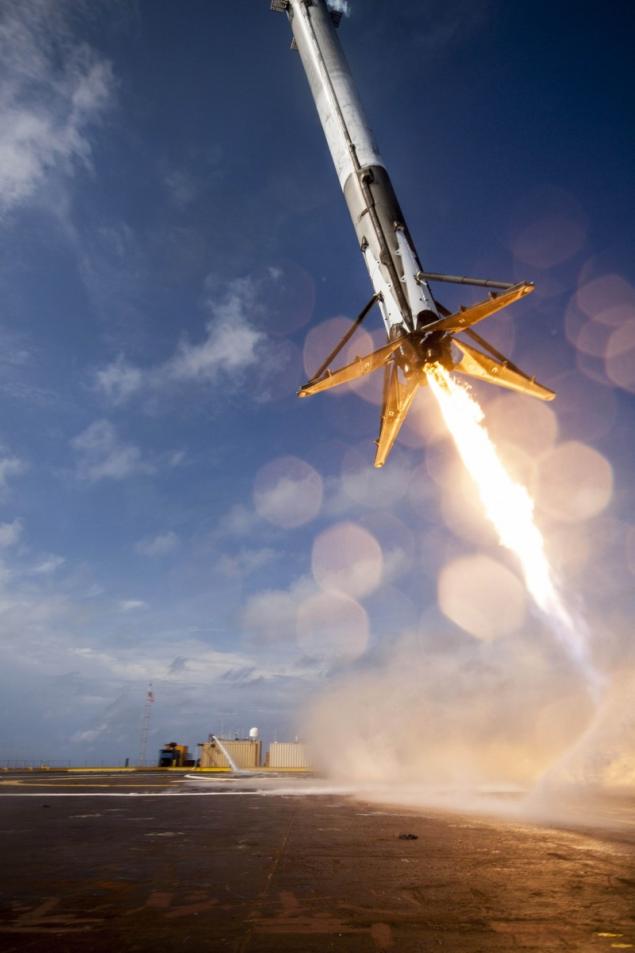
Walking through the history of a young but very promising company, you can say one thing: SpaceX is just starting its way, and if Elon Musk and his team will be able to face all the technological challenges that are (and will be in the future) have their way, it is possible that already our children will be able to, conceived the Mask to fly on a weekend in orbit and even visit Mars.
The company is leaps and bounds, ten years ago we did not even have working missiles, and today SpaceX successfully delivers cargo to the ISS. Let's hope that their recent bad run of June will be their opportunity to improve their missiles and in December of this year, another rocket with a blue inscription SpaceX win space. published
P. S. And remember, only by changing their consumption — together we change the world! ©
Join us in Facebook , Vkontakte, Odnoklassniki
Source: hi-news.ru
We all know that brave ideas guy, and he seems to have taken over the space thoroughly, that, in fact, the proof of SpaceX. Today we will try to understand the history of this company and tell you what was Elon Musk and the SpaceX company to make a commercial private space flight a reality.

Elon was captured on a simple idea: to create a commercial airline for space. This idea meant that the missiles should be like planes, reusable, publicly available and easy to handle. It was the plans for our planet, Elon went on, the plans he was also on the exploration of Mars is to create on Mars live a city. The idea is certainly ambitious, and if we talk about Mars, probably, it is a plan not for the next 10 years, although Elon says the opposite, but the fact that Musk already shows and proves to us today — the realization of his first idea called SpaceX.
In 2001, Elon Musk began his journey with the search for a suitable booster. The choice fell on “Dnepr-1”, but the Mask is not satisfied with the price. Considering that the materials to build the missiles are only 3% of the final cost of the rocket, already thinking about their future space company, he came to the conclusion that his company could reduce the cost of launching missiles 10 times with 70% profit. Another argument in favor of creating their company was developing its own components and technologies for their own private rockets, which until the emergence of SpaceX simply didn't exist in nature.
And in early 2002 Musk launched the search for people for his space company, which soon received the name of SpaceX. Elon took the team Tom Mueller, and when he accepted his offer, Elon formalized company. The company rented a hangar with an area of about 7,000 square feet in El Segundo, California. Musk decided to call their first rocket, Falcon 1 in honor of the Millennium Falcon spaceship from "Star Wars". Also Musk has planned the date of the first launch of the Falcon 1, exactly 15 months, the company that is, by November 2003. But, alas, Musk underestimated the time for development from scratch of the launch vehicle and three engine families: Merlin, Kestrel, and Draco.

The first launch of Falcon 1 took place on 24 March 2006. Failed at the stage of the first stage engine. Immediately after the launch was followed by a fire, and the missile fell into the water. As Musk said in an interview, he was hoping for a good run, and the result was, in principle, predictable. With this run and began a black stripe SpaceX for longer than 2 years.
The second Falcon 1 launch also ended in failure: from off-design conditions when dividing the stages, the fuel stopped flowing to the engine, the rocket had not reached orbit and burned up in the atmosphere. The third time also did not succeed, the first step after the split "catch up" the second and struck it. The blow fell at the moment of start of the engine of the second stage, whereby the second stage is out of order. On this launch the company is strongly hoped and even made a payload rocket carrying one military American satellite, two Malaysian microsatellite and the cargo of ashes for burial in space.

The failure of the fourth launch would mean the collapse of the company, Musk himself said in an interview that on the fourth launch, the company had no margin for error. The launch took place on September 28, 2008, the rocket was just a mock-up of the cargo 150 kg. the Launch was successful, and the cargo was delivered into a geosynchronous transfer orbit. Elon has proved that his company is not hopeless and has a right to exist.
13 July 2009, Falcon 1 successfully launched into space Malaysian satellite RazakSAT aboard. This was the last scheduled flight of the Falcon 1 family, and the company closed the project and started work on a new family of rockets called Falcon 9.

SpaceX formally announced the Falcon 9 on 8 September 2005, a year before the first launch of the first family of carrier rockets. In 2008, the company tested all components of the rocket, and on 4 June 2010, the rocket was standing vertically on the launch pad at Cape Canaveral, and was ready to run. The first launch was canceled a few seconds before the start due to technical problems, the second time the rocket has successfully said goodbye to the Land and delivered its cargo into orbit.
The second missile launch was marked by the first private return cargo vehicle, called Dragon, which SpaceX has developed. Dragon was created for a project Commercial orbital transportation services from NASA. Dragon had the intention to deliver to the ISS food and equipment to maintain the operation of the station. After 7 months after the first launch of the Falcon 9 rocket and a new ready to use spacecraft Dragon made a demonstration flight in which Dragon successfully orbited the Earth twice and splashed down in the Pacific ocean.

SpaceX has won a contract from NASA, and since then, Dragon has become a regular guest on the ISS. In 2014, Elon Musk has unveiled the Dragon V2 passenger spacecraft on the basis of the original cargo Dragon. V2 can accommodate 7 astronauts. In tandem with the launch vehicle Falcon 9, SpaceX received a contact from NASA in the amount of 2.6 billion USD for the completion of the ship and its certification for flights to the ISS. Already in 2017, the Dragon V2 c 4 astronauts will fly to the ISS, up to this point, of course, the company will make test flights without passengers. July 14, 2014 has been a successful launch of a new version of the launch vehicle, the Falcon 9 V1. 1 R with Dragon on Board.
Modification of R implies]. Reusable — reusable. The idea was that during undocking missiles top with Dragon goes to the ISS, and the lower part falls back to Earth and lands on a special landing pad, after which it served, and it will be ready for re-launch. But since the idea's inception to its successful implementation in the space sector takes a long time and a great many mock tests.

5 attempts to Elon and his team taught their rocket successfully make the descent from a great height to reach the landing pad. At the moment the missile has a problem with a smooth final landing, but Elon said that SpaceX is enough for 2 attempts, and the rocket will learn how to successfully land on the platform. At the moment, the last attempt landing rocket failed before it started: on 139-th second of flight there was the flight anomaly, which ended after 8 seconds the destruction of the launch vehicle.
This is the first in the history of the failure of the launch family of Falcon 9 from SpaceX, up to this point the company 20 times in a row successfully sent their rockets into space. In December of this year, SpaceX will launch a Flacon 9 new version 1.2. The company has planned more than 20 runs ahead until 2019.

Walking through the history of a young but very promising company, you can say one thing: SpaceX is just starting its way, and if Elon Musk and his team will be able to face all the technological challenges that are (and will be in the future) have their way, it is possible that already our children will be able to, conceived the Mask to fly on a weekend in orbit and even visit Mars.
The company is leaps and bounds, ten years ago we did not even have working missiles, and today SpaceX successfully delivers cargo to the ISS. Let's hope that their recent bad run of June will be their opportunity to improve their missiles and in December of this year, another rocket with a blue inscription SpaceX win space. published
P. S. And remember, only by changing their consumption — together we change the world! ©
Join us in Facebook , Vkontakte, Odnoklassniki
Source: hi-news.ru
15 unexpected communication techniques that will help you in your career
Egg Breakfast smoothie — a feeling of satiety for a long time




